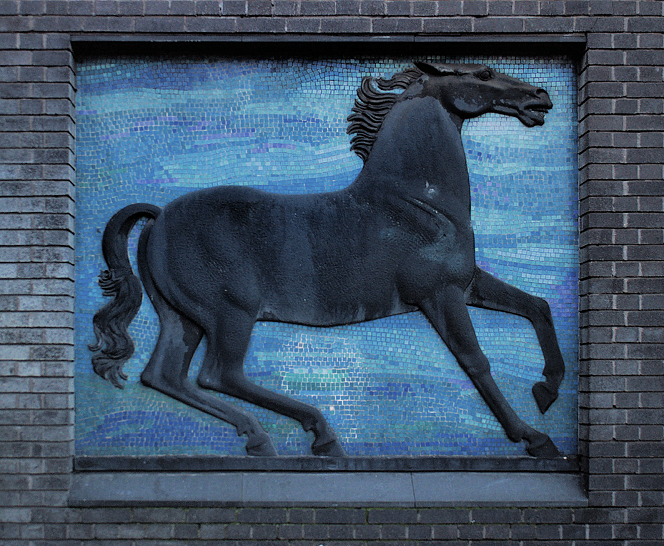Blackhorse Road
Blackhorse Road, Waltham Forest
A station and commercial thoroughfare in west Walthamstow

‘Blackhorse’ is a corruption of Black House, a mansion that stood at the southern end of the road. Originally called Werdestrete and later Black House Lane, the road came into existence in Saxon times as a route from the common lands of Higham Hill to the nearest mills, at what is now Lea Bridge.
Local magnates the Warner family acquired the crumbling Black House in 1813 and replaced it with a Regency villa called the Clock House. Perhaps to create a deliberate contrast with the earlier property, the Warners built their new home using white Suffolk bricks. Commercial and industrial properties began to line Black Horse Lane later in the century and its southern section was renamed Black Horse Road in 1888. Around this time Sir Courtenay Warner began to lay out streets of terraced housing on the family’s extensive estates in Walthamstow and Leyton and he instigated the creation of the Tottenham and Forest Gate Railway to boost the popularity of the project. The line opened in 1894, as did Black Horse Road station, sited on the eastern side of the road.
The Victoria line arrived here in 1968, providing the only intermediate interchange on the Gospel Oak to Barking line. A new set of surface buildings was constructed for its station, adorned with a fibreglass relief of a black stallion by David McFall, shown in the photo above.* The new station adopted the one-word spelling of ‘Blackhorse’ that was by then in use for the road itself. The old mainline station was demolished in 1981 and its platforms were moved west to allow the use of a common entrance for the two services.
![Hidden London: Blackhorse Mills Blackhorse Mills build-to-rent scheme [developers' CGI]](https://hidden-london.com/wp-content/uploads/2021/07/Blackhorse-Mills-CGI-742x433px.jpg)
In October 2016 Waltham Forest council’s planning committee approved Legal & General’s proposal for a build-to-rent development north-west of Blackhorse Road station on the site of the former Ferry Lane industrial estate, which was once home to a very mixed bag of factories, furniture makers, engineering works and laundries. The development was originally going to be named ‘Ferry Lane’ but some marketing whizz came up with ‘Blackhorse Mills’, which conjures up a more nostalgic (but entirely imaginary) vision of the past use of the site.
Completed in August 2020, the Blackhorse Mills project delivered 479 homes, as well as communal amenities, open landscaped areas and leisure spaces for residents. Shown in the developers’ CGI above, the scheme consists of five ‘gateway buildings’ along the edge of the so-called Walthamstow Wetlands.
For the purposes of Waltham Forest’s ‘mini-Holland’ anti-car programme, the predominantly residential area south-east of Blackhorse Road station (framed by Forest Road, Hoe Street, Selbourne Road and Blackhorse Road) has been named ‘Blackhorse Village’.
